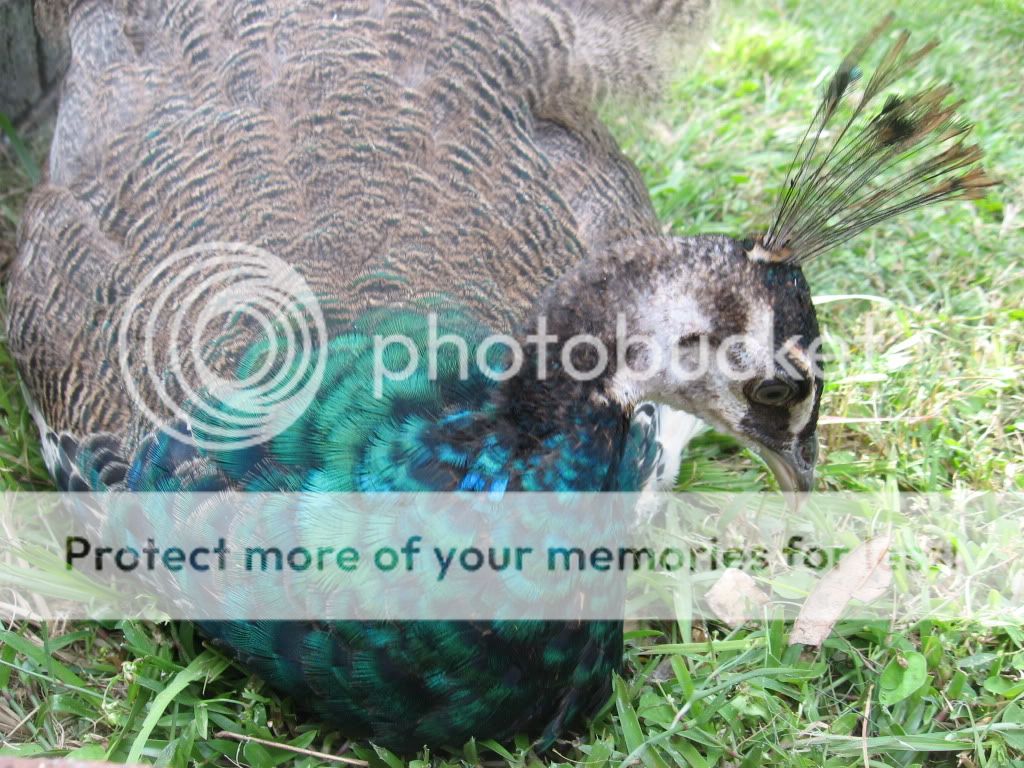For India blues it is normally pretty early, maybe around four months old the peahens start to lose a lot of the barring that they have as young chicks, and the peacocks keep the barring and show more of rust colored flight feathers with some dark feathers in the center of the wing. The peahens will continue to get more sold wing coloration and the peacocks will continue to get more of a bold stripe pattern until it is a big contrast of black and white.
Here is a young peacock I am hand raising that is around four and a half months old. We knew he was a he since he hatched because there was something about him that just screamed "Peacock", we were right because as he got older he never lost those stripes.

Here is a young peacock I am hand raising that is around four and a half months old. We knew he was a he since he hatched because there was something about him that just screamed "Peacock", we were right because as he got older he never lost those stripes.




